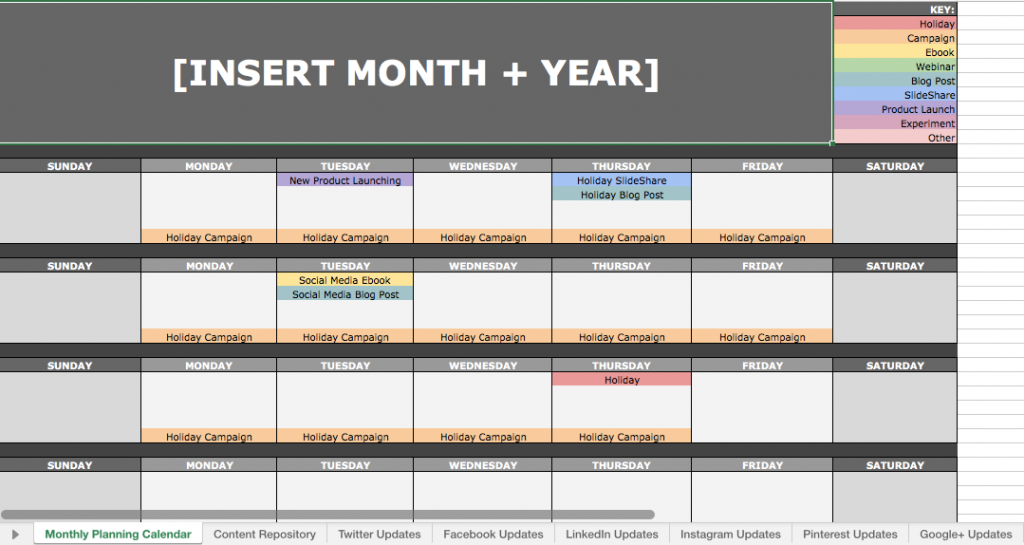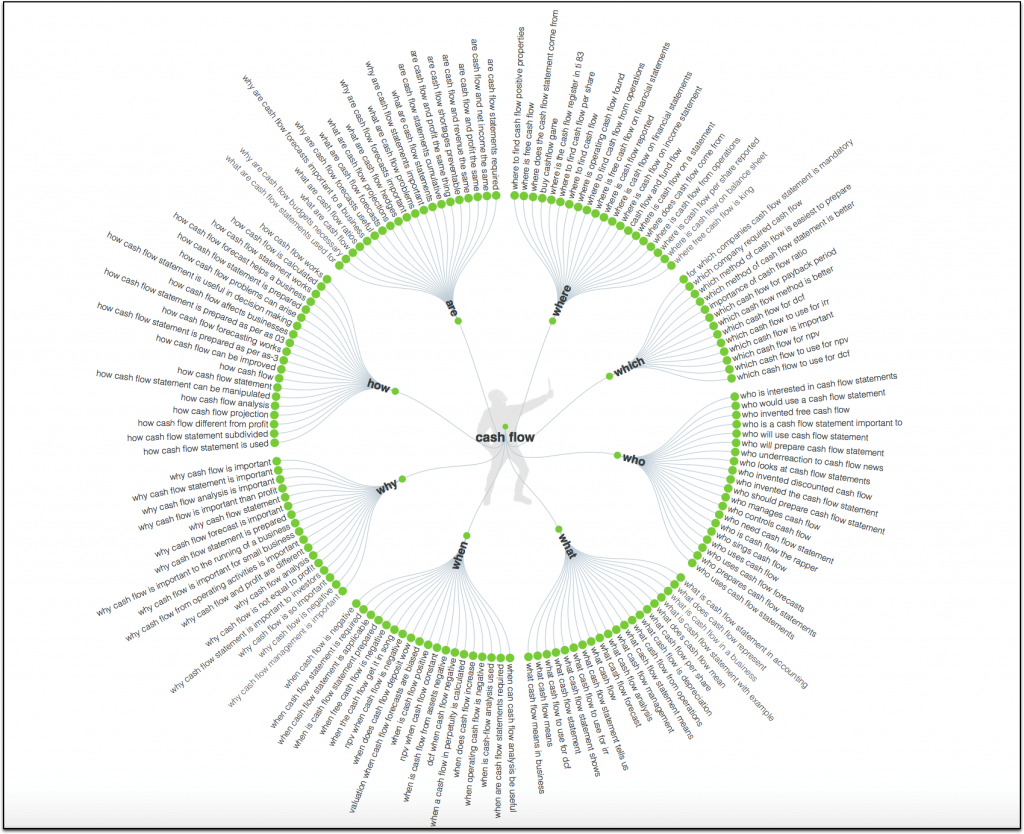Having a content calendar is an integral part of your content marketing strategy. It makes things easier and way more organized. Companies of all sizes should have a content calendar because it takes away all the guesswork of when and what to post. Ideawhy-you-need-a-content-calendar-and-how-to-go-about-creating-onelly, the calendar will take into account things like the best times and days to post, various holidays, event announcements, etc. The content calendar should serve as your guide to posting your content across all your social media. This way, it will be much easier to stick to your goals.
Why Do You Need A Content Calendar?
A content calendar acts as the centrepiece for your content strategy. You can try and “go with it” when it comes to content, but if you are a company that is currently generating less than 16 pieces of content per month, you’re already behind.
It would help if you had structure and strategy for success, and a content calendar can help you with that. It takes a lot of time to research and plan content that is valuable to the consumer – especially when you have to do this every month to be relevant.
Bizarrely, 63% of businesses do not have a strategy for their content. There’s no calendar, no plan, and they come up with topics as they think of them – which is a risky way to produce content for your audience! Content marketing needs more than guesswork – and your audience deserves more than that, too.
The Benefits Of A Content Calendar
There are plenty of benefits to having a content calendar for your business, not least that you will have something to follow, so you will not panic and write drivel when the time comes. Some of the benefits include:
- You will stay organized and on track with your message when you plan your content. Your content calendar will be a big part of gaining perspective in your marketing strategy while helping you to see where there are gaps in your content.
- Content calendars are excellent brainstorming tools. You can get thinking when you start to plan your content and writing it all down can enable you to see where you can generate brand new ideas. It also helps with team motivation – if your team knows what they need to do, it’s much easier to get things done quickly and efficiently.
- A content calendar can help you to maintain your value to your audience. You can’t just post anything and hope it will work. Well, you can, but why would you risk that when you can provide valuable, consistent, and thought-provoking content instead?
- Speaking of consistency, a content calendar enables you to be that, too. You should know that being consistent with your content is how you keep your audience interested, and your content calendar will help you keep yourself in check.
- Engagement is a big problem for many businesses, and while you can wing it when it comes to social media tweets and posts, you should go beyond that for your blogs, vlogs, and other content. Being in a hurry leads to mistakes, like repeating topics and posting something that doesn’t relate to your audience. A content calendar can prevent this from happening while helping your audience grow organically.
- Social media marketing is far easier to plan when you are using a content calendar. You can identify the pieces that had the most reach, the most engagement and the most shares, and you can incorporate these into your social media strategy and reduce bounce rate along the way. When your content is great, people are more likely to stick around. You can also use social media management tools for achieving the best results.
- Lastly, a content calendar allows you to keep track of your performance. You can measure how effective your content is if you are tracking your metrics.
Taru Bhargava, Content Marketing Specialist at Genbook — an online booking software explains the relevance of it. “Our product caters to small business entrepreneurs in the personal service segment, and it’s vital that our content caters to each of these personas. If your business caters to multiple personas, like us, it makes sense to have a full-proof content calendar. Without one you lose the grip and have no control over what’s getting shipped out, you’ll see those good ideas will not see the light, and chaos will prevail.”
What Makes a Good Content Calendar?
As we mentioned, the content calendar is a centerpiece to your content marketing strategy. It’s where your ideas will be collated and assessed, where topics are stored. It’s a way to organize, and it will include things like topics that have an owner assigned to them, allowing you to delegate better. It’ll have a list of things that you want to include for the month with the top spots taken with your priorities first. It should have lists and links that will indicate where content will be posted.
You need form and function with your content calendar, and you need it to be stuffed full of information that will eventually project the exact content you want to post and when. It should have dates and times – even names of who will write which piece. This is your thinking spot, your place to hash out those random ideas that pop up and turn them into actionable, profitable campaigns.
How To Create A Content Calendar
There are a variety of tools that can help you create a content calendar, and these include:

If your team works with PDFs a lot, it’s a good idea to have a pdf-editing tool that allows you to share your files easily between team members, leave annotations, convert PDFs to other file formats and so on. A PDF reader allows for easy collaboration with your team while keeping all your files secure and in one place. Planning your content this way allows for both flexibility and quick edits.

Many businesses use Trello as a way to manage shared team projects. You can use different boards to pin ideas, jobs, suggestions, and commentaries to bring a project to life. Using Trello can ensure that your team is organized while also having a place to discuss new content ideas.
Microsoft Excel

Ah, good old Excel. The champion of spreadsheet programs and the winner of all things organized. If you want a content calendar with careful planning, Excel is the right option. You can customize Excel and share spreadsheets with others, allowing them to make changes that are necessary for your content planning.
Answer The Public

If you want to have a tool that empowers your content marketing, you need Answer The Public. This works with Google Suggest for keywords and helps you create a mind map showing the right results. You can better understand your audience and gear your content to them this way.
Google Drive

With content calendars being busy, you need a way for all of the suggestions and ideas to be as transparent as possible. Google Drive has plenty of features that enable you to build an efficient calendar for your content, and you can make suggestions across different teams to ensure that it’s rolled out effectively, too.
Creating Your Content Calendar
There are some easy steps to create your content calendar, and these include:
- Brainstorm your content ideas with your team first. It would help if you had ideas before you can develop any content. And this should include topics, posts, case studies, pictures, videos – the list is endless. You can even repurpose old content and jazz it up for current trends and information in your industry.
- Decide how long you want your content calendar to last, and plan your ideas around that length of time and based on how often you plan to post
- Next, think about your publication channels. If you have a blog, is that independent or embedded in your website? Are you planning content for your website? Think about video sharing channels like YouTube and how you can impact your audience with videos. Decide which social media networks you plan to post content on and how often you plan to do it. Lastly, set up an email subscription list as part of your content strategy and choose how many you will send.
- Use your new calendar and a spreadsheet in conjunction with each other to map out when you post and who does it. The calendar can include the publication date, the person who will post the content, the title, the topic, even the keywords you plan to use.
- When you work in a team, use the calendar to define the workflow accurately so that you are not all overlapping each other concerning who is posting what and when. It would help if you briefed everyone on the team about how the calendar will be used and the goals you want to achieve with your content calendar. Have someone in place to contact if there are any concerns, too.
- Lastly, make use of marketing automation tools for publishing your content. Apps and software like WordPress, Buffer or Tweetdeck can help you schedule and publish your content, so you don’t have to remember to publish on the right dates that you’ve mapped out on your content calendar. Whether you post weekly or twice a week, you need a steady stream of content to keep your audience interested. Be realistic with your deadlines for content, and make sure that you are staying connected to your team.
- Don’t forget to track your content and watch your competition! You need to know whether your content is having an impact, and you also want to make sure that you’re not duplicating the competition!
How To Make Sure Your Content Calendar Is Successful
If you want to grow your business audience, you need valuable content that will drive traffic. For content to be valuable and mean something to those reading it, it needs to be consistent. If you sign up to an email list, you expect your emails to come through regularly – you sign up because you’re interested in what a business has to say.
If you are providing content, you need to ensure that people will continue to come back to your website, looking for the next piece. If you are not consistent with your content strategy, you will lose your followers, and you will lose profits as a result. You can set up a website visitor tracking to see how well your content is performing.
The best way to be consistent? An excellent content calendar. You can’t spend months posting on Saturday morning to your vlog, only to stop and switch to Thursday at lunchtime. People come to trust your business when they know you’re going to be consistent. It’s how strong customer relationships are built. It may not be easy when you first start out, but it’s going to be better for your business if you are consistent about releasing your content, no matter the medium.
How A Content Calendar Can Be Optimized
We’ve learned why it’s essential to have a content calendar and how you can improve your content organization, but now you need to know how you can optimize it fully. Check out the tips below, and you will see a marked improvement in the way you use your content calendar and its impact on your audience.
- You can use as many tools as you like to have your content calendar in place, but if you don’t have the right team working with you, you’re going to struggle. It would help if you had your whole team to be on board with the method you use for your content calendar. Establish how you plan to interact with each other every day, and you will find better success.
- If you are a little lost with where to start, think about the dates in your calendar. If you have decided on a three-month content calendar, what would your business’s critical dates be in those three months? Build your content around those first, and the rest will be easy to fill in.
- Be detailed in the information that you add to your calendar. The more information your calendar holds, the easier it will be to help your employees succeed against their content deadline.
- Don’t reach too far when you start out. You don’t want to jump in with six months of content planning to do with a view of posting every single day across multiple platforms. Start smaller until you become confident with your content calendar, and it will be easier to organize it as you add more channels and more posting days.
- Be on top of your tracking. Each time you publish content, track the results. This will prevent you from posting again if the content is not well received by your audience. It will also show you the content that you SHOULD be posting.
The Takeaway!
So, today we’ve learned why you need a content calendar and why you shouldn’t delay in setting one up. A good content calendar is detailed, consistent and manageable for you and your team – so what are you waiting for?
BIO:
Darya Jandossova Troncoso is a photographer, artist and writer working on her first novel and managing a digital marketing blog – MarketTap. In her spare time, she enjoys spending time with her family, cooking, creating art and learning everything there is to know about digital marketing.
















